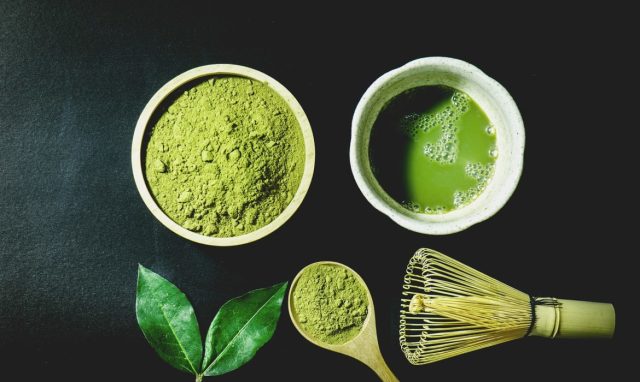Matcha is a finely ground powder of specially grown and processed green tea leaves, traditionally consumed in East Asia. The traditional Japanese tea ceremony centers on the preparation, serving, and drinking of matcha as hot tea, and embodies a meditative spirituality. In modern times, matcha is also used to flavor and dye foods such as mochi and soba noodles, green tea ice cream, matcha lattes, and a variety of Japanese wagashi confectionery.
Matcha is made from shade-grown tea leaves. The preparation of matcha starts several weeks before harvest and may last up to 20 days, when the tea bushes are covered to prevent direct sunlight. This slows down growth, stimulates an increase in chlorophyll levels, turns the leaves a darker shade of green, and causes the production of amino acids, in particular theanine. Only the finest tea buds are hand-picked. After harvesting, if the leaves are rolled up before drying as in the production of sencha, the result will be gyokuro (jade dew) tea. If the leaves are laid out flat to dry, however, they will crumble somewhat and become known as tencha. Then, tencha may be deveined, destemmed, and stone-ground to the fine, bright green, talc-like powder known as matcha.

